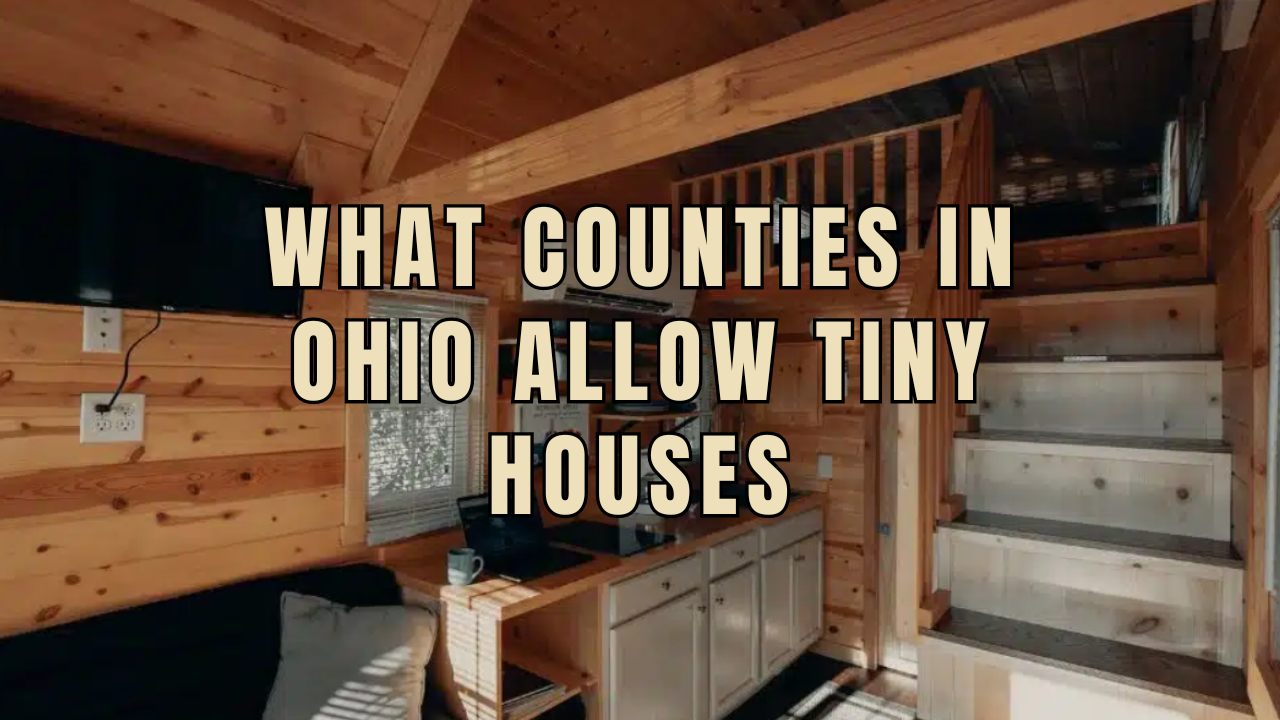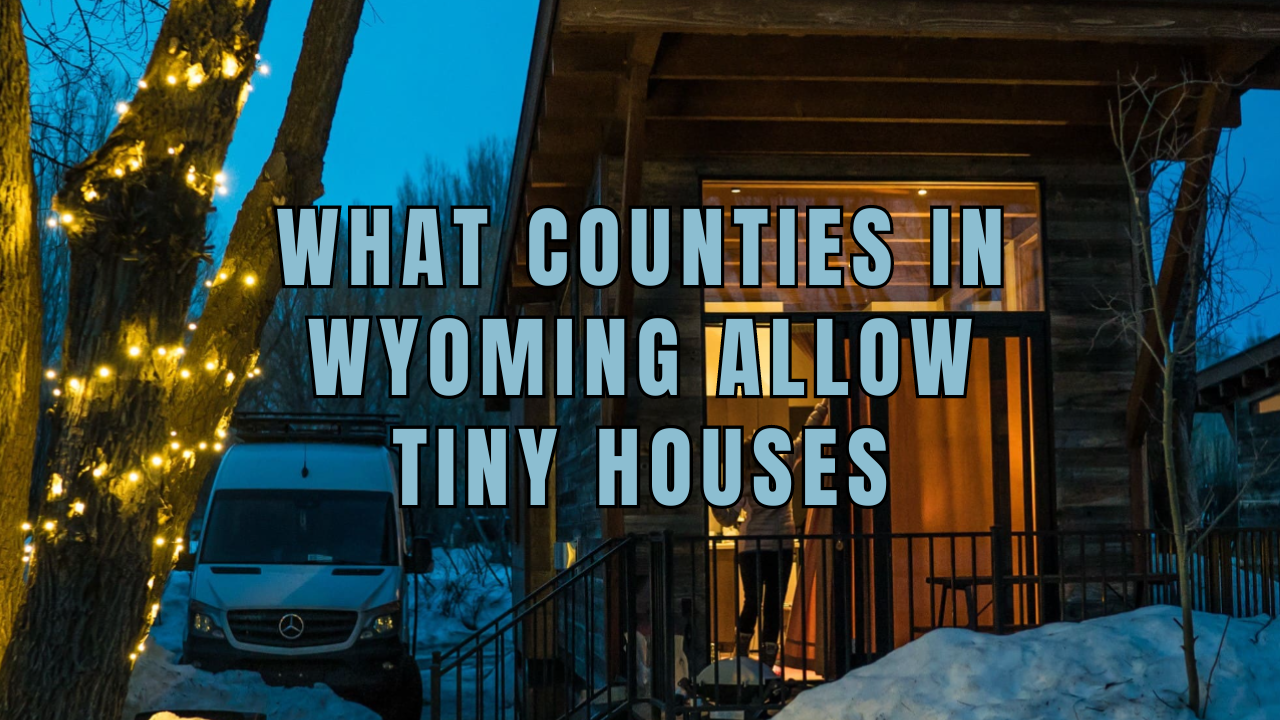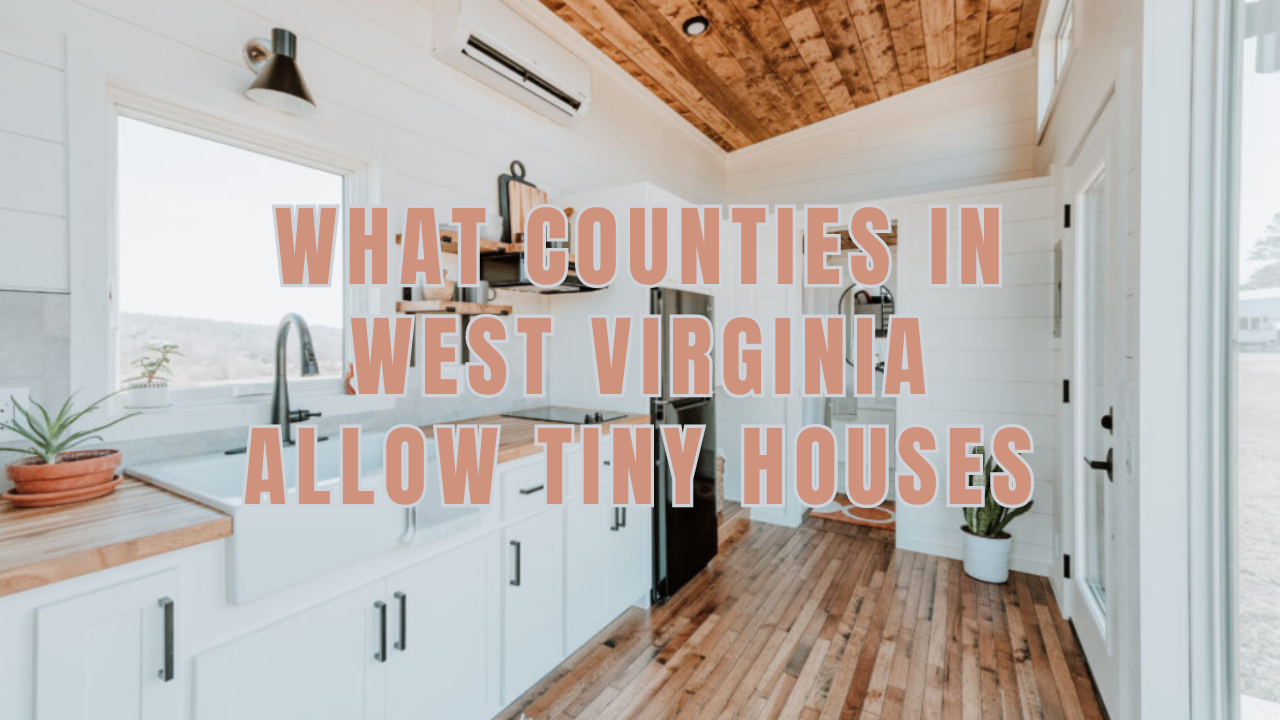The popularity of the tiny house movement has been increasing rapidly across the country. It has led many individuals to explore alternative living arrangements in tiny homes.
If you happen to live in Ohio and are considering joining the tiny house movement, you will be glad to know tiny houses are legal and there are several tiny houses for sale.
However, before getting your dream tiny home, familiarize yourself with the rules and regulations surrounding tiny houses in Ohio. Furthermore, understanding the requirements will ensure your tiny home complies with the state’s law.
Tiny House Prices in Ohio
After starting your tiny house journey, you’ll want to know the affordable possibilities for your dream tiny home and your budget.
We offer a solution to fit every demand and budget, enabling you to start working on your home construction project. Check out Ohio’s tiny homes for sale!
What Counties in Ohio Allow Tiny Houses?
Tiny houses are legal in certain counties in Ohio, including Cuyahoga and Preble. However, regulations and restrictions vary by location, so check with the specific county’s zoning laws before building or parking a tiny house. Each county has its own set of guidelines for tiny house construction and parking.
Cuyahoga County
Individual municipalities determine the Ohio tiny house laws and local zoning regulations in Cuyahoga County. Some areas have strict rules on minimum square footage, while others are more lenient.
Accessory housing units are permitted in Cuyahoga County and present the proper permissions. These ADUs can only be secondary residences; they are not fit as primary residences.
Preble County
Preble County is leading to a precise definition of tiny dwellings and to make state restrictions more understandable. According to regulations, a recreational vehicle that is 500 square feet or smaller is a tiny home. It benefits residents who wish to downsize and rent land in the community of Cedar Hill Tiny Village.
Tiny House Regulations And Rules In Ohio
Regulations and rules for tiny houses in Ohio vary depending on the local jurisdiction. Some areas may have restrictions on minimum square footage or zoning requirements, while others may allow for more flexibility.
Usually established at the municipal level, following the laws and ordinances helps to receive permissions and approvals depending on the types of tiny houses. Additionally, the state of Ohio has specific requirements for construction standards and regulations, outlined in Ohio Revised Code Section 3781.06.
Permanent Structure Rules
The statewide regulations and building code in Ohio, which presently has a minimum size limit of 950 square feet for permanent houses, does not specifically identify tiny homes.
It covers an area of 500 square feet or less, much larger than the typical tiny home. Nonetheless, a few cities have made accommodations for small dwellings. For instance, in Columbus, tiny homes are not permitted as long-term residences.
Building regulations for tiny houses differ from those for conventional dwellings, and adherence to these regulations is necessary to receive permissions and approvals.
- The permissions include requirements for safety features, electrical and plumbing systems, insulation, structural soundness, foundations, and more.
Temporary Structure Rules
Since temporary tiny houses, such as tiny houses on wheels, are frequently movable and not meant for year-round residence, they could be subject to laxer restrictions.
Temporary tiny homes are considered mobile house vehicles, which would make it easier to comply with Ohio’s laws. But parking a tiny house on someone else’s land would need getting permission from the owner and following local zoning laws.
- Complying with size and safety requirements and acquiring the necessary certifications from groups such as Pacific West, RVAH, NOAH, or RVIA are examples of local laws.
Transitional Structure Rules
Local zoning laws and restrictions apply to transitional constructions like ADUs. In Ohio, certain areas allow ADUs, such as tiny guest homes or garage conversions on properties with primary residences.
Although Ohio does not designate tiny houses as permanent dwellings, there may be methods to legally establish a tiny house as a residence through the appropriate licenses and zoning restrictions.
- The ADUs can only become secondary residences, not primary ones.
In Ohio, Where Can I Build A Tiny House?
Finding a cozy home and a place is essential. Select a licensed tiny home builder to help you with the construction, handle any paperwork, and guarantee that your home complies with building codes.
Creating a tiny house can be easy with proper planning and execution. Despite requiring significant labor. The following spots are typical locations for tiny homes:
- RV parks
- National Parks and campgrounds
- Tiny house communities
- Private properties
Tiny House Communities in Ohio
Tiny home communities in Ohio are gaining popularity as more people seek the benefits of a smaller ecological footprint and a greater sense of connection with their neighbors. These communities often offer shared amenities, communal spaces, and a sense of community.
Cedar Springs Tiny Village
Ohio’s first tiny house community is Cedar Springs Tiny Village.
Located in New Paris, Ohio, the village experiences all four seasons–sunny summers, lively fall market days, beautiful springs, and charming winters with snowy sports like tubing and sledding.
Bring your own tiny house! All the same, Cedar Village rents or leases out the plots to small homes. The community accepts any tiny home on wheels construction that is certified by Pacific West, RVAH, NOAH, or RVIA.
Natural Springs Resort provides day and seasonal permits for access to the pool, beach, fishing, scuba diving, and other exciting activities, just a short stroll from the rental plots. Furthermore, a nearby coffee shop, The Cedar, is easily accessible on foot from the tiny house community’s north end.
Tiny House Builders Near Me
You don’t need to look at Ohio tiny house builders to get your ideal home since Great Lakes Tiny Homes has a selection of tiny houses to send anywhere in the country.
The RV Industry Association (RVIA) approved Great Lakes Tiny Homes as a builder. It is dedicated to upholding the strictest safety, regulatory, and tiny house construction requirements to the best production standards.
Do I Need a Certified Builder?
You do, indeed. You may also try your hand at a do-it-yourself project, but be conscious of risks and unknown outcomes.
Working with a builder that has earned RVIA certification, such as Great Lakes Tiny Homes, ensures that the tiny house is under regulations and guidelines. It means that the materials in your house are of the highest caliber, secure, and long-lasting kind for your tranquility.
Getting finance and insurance is another benefit of working with a certified builder. Following the RVIA requirements, you can be sure your little house is secure and fit for habitation.
FAQs
Can You Make a Tiny House in Ohio Your Main Residence?
Of course! You can live in a tiny home full-time in Ohio.
Please consider the different local laws and regulations, depending on where you live. Speak with the local governments and zoning authorities to discover if your small house complies with all applicable laws and regulations, including those inspection requirements.
If you deal with certified builders in Ohio, you could enjoy a more laid-back and environmentally responsible lifestyle.
What Is the Minimum Size Requirement for Tiny Houses in Ohio?
The minimum housing size required by Ohio rules is 950 square feet. It is far larger than the average tiny house dimension, 500 square feet or less.
However, mobile tiny homes categorized as recreational vehicles frequently get around this requirement. Additionally, several Ohio counties that encourage tiny houses have relaxed their local construction laws to allow for smaller permanent residences.
Can I Construct a Tiny Home in Ohio and Place It in My Backyard?
In Ohio, the specific zoning laws and rules apply. We propose to confirm with relevant municipal authorities or zoning departments if zoning and building permits will be approved.
Certain regions permit ADUs in backyards or have rules specifically for small homes. However, others could impose limitations or restrict such buildings as adding a second home would convert the property’s single-family use to a multifamily one.
Conclusion
In Ohio, local governments set the laws governing tiny house living, and there are differences in these laws between counties. While Cuyahoga and Preble counties are more flexible, other locations have more stringent regulations.
Potential tiny home inhabitants should do deep research and consult with legal resources to manage the complicated regulatory framework. People must be mindful of recent advances in small-house technology and push for more uniform and helpful laws.





